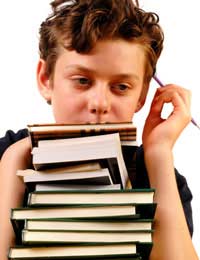History: Using Evidence

Good history is always written on the basis of evidence. When learning history your child needs to learn the importance of evidence and how to distinguish it from stereotypes, opinion, biases and propaganda. Your child needs to be able to judge whether history, such as World War 1, is based on enough good evidence to provide a true account of the life and times.
What is Evidence?
When starting to talk about using evidence with your child first brainstorm ‘what is evidence?’. Your child should be able to come up with lots of ideas. For instance, evidence can consist of pictures, photographs and artefacts such as envelopes, stamps, letters, documents, music, paintings, photos, diaries and even ICT based sources.Discuss the advantages and disadvantages of using different types of evidence. Decide on the reliability of each type of evidence. If a particular type of evidence is not accurate why is it not? Discuss the notion of bias and how it can affect a story.
The easiest place to find pictorial or document evidence is on the Internet or on CD ROM. Your local librarian should also be able to provide you with information on finding evidence for the topic your child is studying.
The following are some suggestions for exploring a portrait:
- Encourage your child to discuss what they think the picture shows.
- Ask your child to tell you why they think the picture was painted.
- Why are the women there?
- What are they doing?
- What are they talking about?
- What is the mood of the picture?
Gathering Evidence
Looking at archaeological discoveries can also tell us a lot about history. You may be able to find a newspaper quote or article about an archaeological discovery on the Internet, in a book or on a CD ROM. Discuss what was found and what it can tell us about life at that time.An interview is a good way to collect information that you can't find through any other type of research. An interview can provide opinion and first-hand experiences. If your child has grandparents or older relatives they could interview them on what life was like for them as a child. They may even be able to remember what life was life during the time of the war.
Depending on the type of evidence you are studying observation is often a great way of exploring. Watching, listening to, touching, tasting, or smelling it may give all sorts of interesting information. For example, listening to a piece of classical music will tell your child what types of instruments they used at the time and what they used music for.
Keep up to date with the history topics that your child is studying with their teacher throughout the year. Studying the same topics at home will help to reinforce what your child is learning in school and using evidence will give your child a more accurate picture of historical events.


Re: English Literature: How to Write a Poetry Essay
New Member Introduction – Happy to Join the Community
Re: Speaking and Listening: Storytelling
nice
Re: Starting a Homework Club
Hi I resently start with a homework club do I need to be rgister at socail workers and go to all that proces please need some at advice
Re: Starting a Homework Club
I'm trying to start a homework club business in my community. I wish I could get a mentor who would assist me step by step to achieve…
Re: Starting a Homework Club
Hello, I’ve recently opened my own private after school homework club but I could do with a lot of guidance (Perhaps a mentor) to help…
Re: Starting a Homework Club
Thank you for your info I set up one in my church as I see many struggling maths and science students From just a few we have grown…
Re: How Much Homework Should Your Child Be Getting?
My daughter has just started year 7. She can get 2-4 pieces of home work per day each from 30-45 mins…
Re: How Much Homework Should Your Child Be Getting?
My 8 year old (year 3) daughter gets almost no homework. We are ,and always have, pushed her to succeed,…
Re: How Much Homework Should Your Child Be Getting?
My daughter moved to secondary school in Wales in January 2019. Since then she has had one or two pieces…
Re: Keeping a Homework Diary
I love school I have been told I could go on this app to do homework ??!!